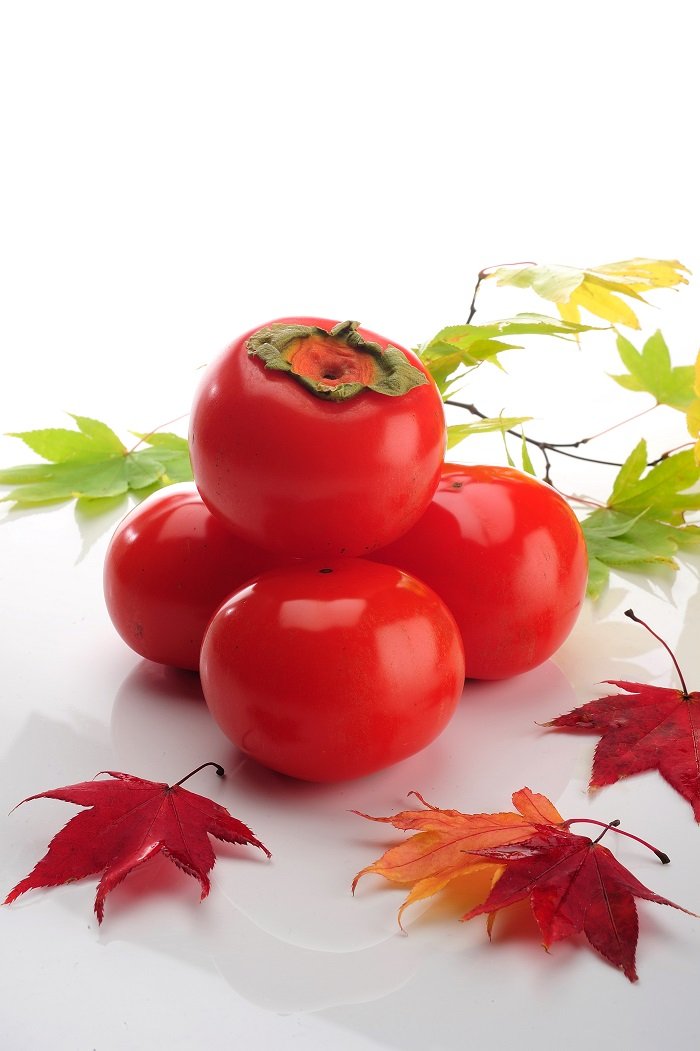KASSHI GAKI / KASSHI KAKI
| Registration Number | 106 |
|---|---|
| Name of the GI | KASSHI GAKI,KASSHI KAKI KASSHI PERSIMMON |
| Class | Fruit |
| Date of Protection | 2021/03/12 |
| Producing Area |
Iwate Prefecture
Kamaishi City |
| Applicant - Name and Address | Kasshi Kaki no Sato Production Association 8-154, Kasshicho, Kamaishi City, Iwate Prefecture |
Producing Area
Kasshi Gaki, or Kasshi Kaki, is a persimmon that is known for its scarlet flesh that looks like a ripe tomato, and soft, jelly-like texture.
It is produced mainly in Kasshi-cho, Kamaishi City, Iwate Prefecture, through a unique and traditional technique of smoking in a muro (chamber) to remove astringency and sweeten. Kasshi Gaki is a traditional local specialty and a popular autumnal item in the Kamaishi region.
For the production of Kasshi Gaki, the native variety Koeda Gaki grown in the producing area is used.
After the harvest, the process of astringency removal is practiced, where the harvested fruit is smoked for about a week in a muro that is wood-heated to keep the internal room temperature around 20 degrees Celsius.
Only unblemished fruit is shipped, while blemished one may be used for processed foods.
Even located in the Tohoku region that is the northern portion of the Honshu Island, the area around Kamaishi City has a relatively mild climate, carrying less risk of damage from snow (and the accompanying broken branches, etc.), typhoons, storms, and frost, which provides suitable conditions for fruit cultivation. In particular, this area is known as the northern limit for the cultivation of persimmon in Japan.
Koeda Gaki, a seedless variety of persimmon, is the only variety that has been cultivated in the producing area since early Meiji Period (1) when it was brought from the Kesen region. People in those days found that the fruit could lose astringency and be sweetened when placed in the attic to be exposed to smoke rising from the irori (open hearth) (2), and began to apply the principle to produce Kasshi Gaki.
In 1945, the muro system was introduced to the smoking process to shorten the processing duration and achieve the scarlet color and soft texture that are essential characteristics of Kasshi Gaki.
Standard astringency removal processes adopted for marketed products apply carbon gas or alcohol and keep the fruit's flesh firm. Compared to this, Kasshi Gaki has distinctively soft flesh, making the fruit effortlessly easy to peel by hand.
Production peaked in 1990 with the number of producers at 90, growing area at 17 ha, and shipping volume at 32 tons. Recently, however, with the aging population, the number of producers has decreased to 19, with a growing area of 3.6 ha and shipping volume of 10 tons as of 2018.
Various succession programs for young local residents are run in the community, such as harvest experience events, tours around muro sites, and a joint project with local high schools planned to study Kasshi Gaki.
- The Meiji period: 1868-1912. It is a period of Japanese history which began after the overthrow of the Tokugawa shogunate and the old, feudal system. It ushered in an era of modernization.
- Irori: An open hearth built in a traditional Japanese house as a part of the floor that is squarely cut out. The square-shaped hearth is sunk in the floor, and charcoal or firewood is burned as fuel. It is primarily used as a fireplace or for cooking, while it has also functioned traditionally as a place for the family to gather.


